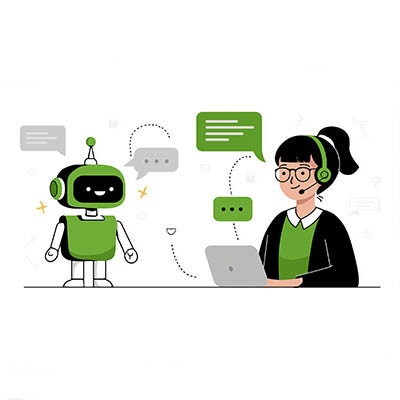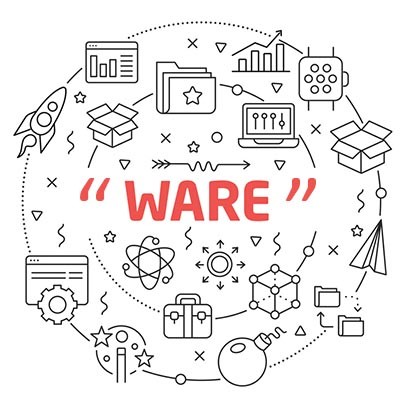Sometimes the best technology solutions will fly under your radar, and depending on your company’s preferred productivity suite, you might already have tools that are being underutilized. One such tool is Google Forms. Today, we’ve got a step-by-step guide that shows you how to create a Google Form for a variety of purposes.
USA Computer Services Blog
AI is a game-changer, there's no doubt about it. From the value your business gets from streamlining operations to its powerful information retrieval, it’s changed, in a very short amount of time, how knowledge-based businesses operate. If you're thinking of handing over your entire customer support operation to an AI, however, you need to pump the brakes a bit. While AI offers incredible efficiencies, completely removing the human element could be a problem for your business.
Nowadays, data is one of the most valuable assets we have. However, if we’re being honest, whenever we say “data,” what we’re referring to is knowledge. In this context, data has always been something that society has valued.
Consider the Library of Alexandria, widely regarded as the first library to transcend cultural prejudices and collect information from multiple civilizations. Its collection must have been breathtaking, but it isn’t around any longer. All that data, gone.
How likely is it that your business could experience similar data loss, and more critically, how prepared are you for that eventuality?
Many business owners struggle with technology that doesn’t meet their needs. We often hear from companies disappointed with their technology investments because they lack the right tools.
Choosing the right technology is vital for business success. In today’s blog, we offer four key tips to help you make informed decisions.
With artificial intelligence becoming a household conversation starter across the country, it’s no wonder the technology has become a key part of operations for countless entities. It’s used in business, education, civic life, and elsewhere… including the U.S. Department of Homeland Security. How is the US DHS using AI to promote the security of everyday Americans?
In today’s business, your data is your number one asset. For this reason it is important that you take steps to protect it. One case that accentuates this is the case of Xiaorong You, which is currently playing out in a Tennessee court. The accused is charged with stealing trade secrets and committing corporate espionage, as she is accused of allegedly stealing almost $120 million worth of BPA-free technologies from several companies, among them the Eastman Chemical Company and Coca-Cola.
When you take a long look at cybersecurity, you need to understand that the main purpose of it is to protect people’s ideas, people’s identities, and people’s effort. It isn’t all about protecting money, even though that obviously is a consideration. This notion led us to a thought experiment that Gizmodo recently undertook: What would happen if all the data stored in the world was suddenly leaked, open for the world to see? We’ve put together some of the responses.
Many businesses have turned to the cloud for their next big technology rollout, but there’s much more that goes into this choice than giving the green light to whoever is implementing it. First, you’ll need to make a choice; do you implement a public cloud, private cloud, or a combination of the two?
Chances are you’ve found yourself in a situation where you have accidentally deleted an important file. However, it’s possible that you can restore the data, depending on the scenario. We’ll walk you through the processes required just in case you find yourself scratching your head over a potentially deleted file.
Hardware, software, malware, ransomware. These are all terms that share two things in common - you probably have heard them fairly often, and they all end the same way. This is no accident. To better understand what these programs are, let’s dig into the basics of what we mean when we’re talking about “-ware.”
Machine learning has become a big deal in a variety of industries, healthcare being a prime example. There are a variety of applications for machine learning in this incredibly important field, all of which show great potential in improving patient care. Below, we dive into just a few examples of how machine learning can improve healthcare.
One of the biggest problems with emerging technologies is the fact that it can be very hard to tell if they will actually provide any benefit to a business without taking the risk of implementing it. This leaves many businesses in a catch-22 of sorts: they lose money by not implementing a new solution, or they lose money because the new solution wasn’t a good fit.















